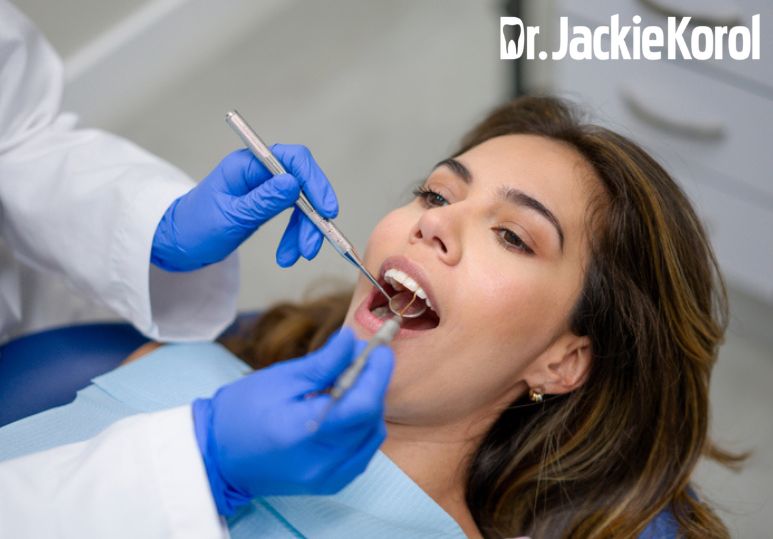What to Expect During a Dental Cleaning: Step-by-Step Procedure

A dental cleaning appointment doesn't have to be daunting. The process begins with a warm welcome and a gentle examination of your mouth. The hygienist then removes plaque and tartar, polishes the teeth, and carefully flosses and rinses to ensure a thorough cleaning. Fluoride treatment might be applied to strengthen teeth. Understanding these steps can make the procedure less intimidating, as each is carried out with the patient's comfort in mind. Regular dental cleanings are not just routine; they are an essential investment in overall health and a brighter smile, showcasing care, compassion, and commitment to well-being.
Going to the dentist can evoke a mix of emotions for many of us, from anxiety to outright fear. What's often overlooked, though, is that regular dental cleanings are crucial for our overall health and well-being. If you have an appointment coming up, knowing what to expect can make the process much less daunting. This blog aims to demystify the dental cleaning process by breaking it down step-by-step. Let's take a calming breath and walk through the entire procedure together.
Step-by-Step Procedure
1. Warm Welcome and Preparation:
As you settle into the dental chair, the dental hygienist will make sure you're comfortable and ask about your dental history, any concerns or special needs. This step is all about creating a relaxed environment, so feel free to voice any apprehensions you may have. Understanding and compassion are the core of patient care, and your dental team will prioritize your comfort from the moment you walk in.
2. Physical Examination of Your Mouth:
Before the actual cleaning starts, your dental hygienist will perform a physical examination of your teeth and gums. They'll be looking for any signs of issues that need further attention. This initial examination isn't something to fear; it's an essential preventive measure to catch potential problems early.
3. Removing Plaque and Tartar:
With specialized tools, the dental hygienist will gently remove plaque and tartar from the surface of your teeth. It might feel a bit strange, but it shouldn't hurt. This step is crucial in preventing gum disease and cavities. If there's any discomfort, let your hygienist know, and they'll make necessary adjustments.
4. Teeth Polishing:
Once all the plaque and tartar are removed, your teeth will be polished with a gritty paste. This helps in removing any surface stains and leaves your teeth feeling smooth and shiny. Polishing not only enhances the appearance of your teeth but also prepares them for a fluoride treatment if your dental professional recommends it.
5. Flossing and Rinsing:
The dental hygienist will carefully floss between your teeth to remove anything that might have been missed during cleaning. A rinse will then wash away any remaining debris. Flossing is an often-overlooked aspect of dental care, but it's vital for maintaining healthy gums and teeth.
6. Fluoride Treatment (If Needed):
In some cases, a fluoride treatment may be applied to strengthen your teeth. It usually takes just a few minutes and can be in the form of a gel, foam, or varnish. Fluoride treatments provide an extra layer of protection against cavities and are often tailored to your specific dental needs.
A dental cleaning might seem like an intimidating procedure, but knowing what to expect can alleviate much of the anxiety. From a warm welcome to the careful removal of plaque and tartar, followed by polishing, flossing, rinsing, and possibly a fluoride treatment, each step is carried out with your comfort and health in mind.
Remember, the dental professionals are there to help and care for you. They appreciate your trust and will work diligently to ensure your experience is as pleasant as possible. Regular dental cleanings are more than just a routine; they're an investment in yourself, a commitment to your health, and a step towards a brighter smile. So, the next time you find yourself in the dental chair, take a moment to relax and recognize that you're in capable and caring hands. After all, every smile begins with healthy teeth, and every healthy tooth is a testament to care and compassion.
Written on behalf of Dr. Korol Dental.
FAQs
If you received a fluoride treatment, it's advisable to wait at least 30 minutes before eating or drinking. Otherwise, you can eat and drink as usual, but it's recommended to stick to soft foods and avoid very hot or cold items for a few hours.
After your cleaning, continue with your regular oral hygiene routine, including brushing, flossing, and using mouthwash if recommended. Avoid consuming dark-colored foods and drinks immediately after to prevent staining if polishing was done.
After scaling, teeth are often polished to remove surface stains and make the tooth surface smoother, which can prevent bacteria and plaque from re-adhering quickly.
CONTACT US
Questions? Comments? Call us today at 1-403-245-9099 or fill out the form below:


